On Saturday, March 15, 2025, we were honoured to have Kristen Penhall lead a Forage & Salve Workshop with us.
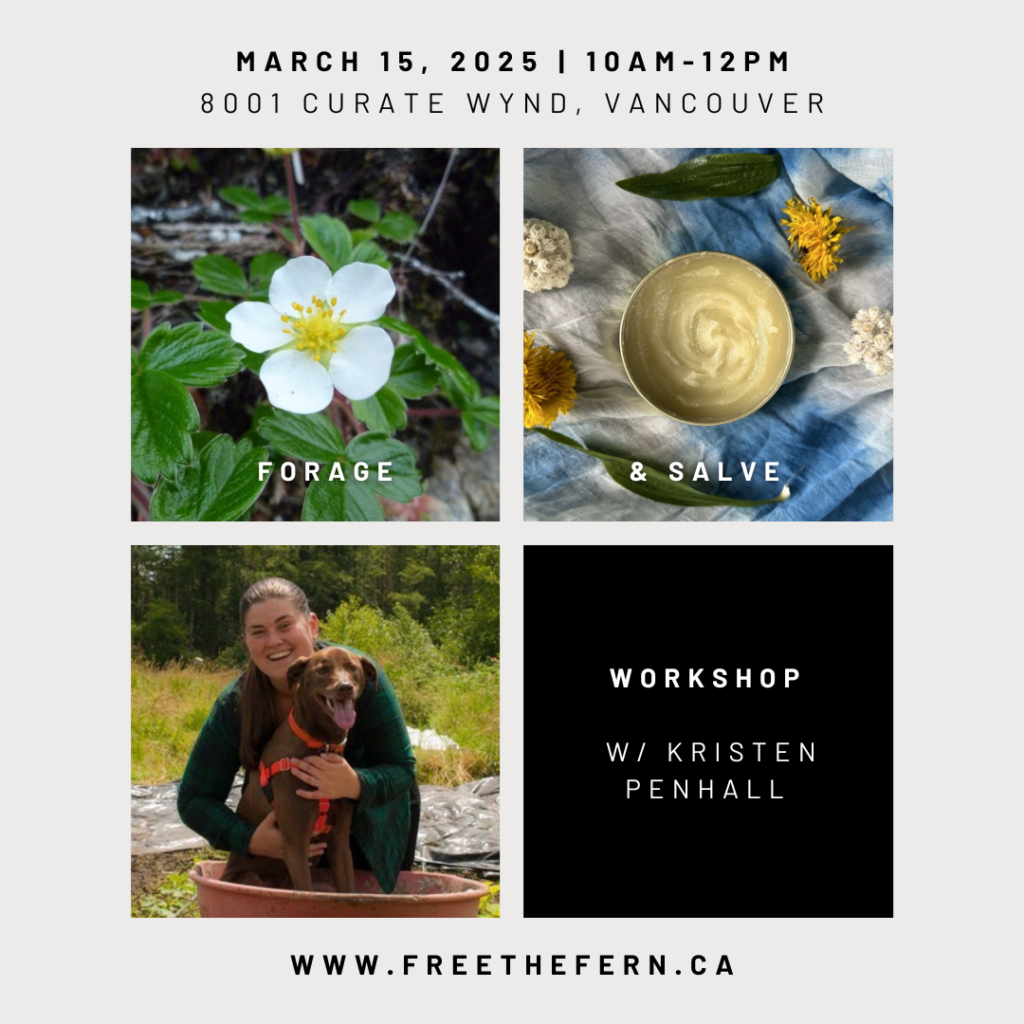
Kristen Penhall Bio: Kristen has loved nature their whole life, and over the last 15 years has focused on plants and pollinators. She studied Holistic Nutrition and completed the Farm School Program at Kwantlen Polytechnic University. For the last eight years Kristen has had a hobby farm in Langley and continues to study the relationship between pollinators, plants, and us.
On Saturday, 13 participants gathered at the Kinross Creek common room. Kristen shared with us some introduced plants that are edible and medicinal:
Chickweed: This herbal plant, with small, white, star-shaped flowers, is often used in salads or in vinegars.
Cleaver: Featuring distinctive sticky hairs, cleavers can decrease inflammation, when applied as a poultice or when taken internally (in a cold water brew).
Dandelion: With their deeply toothed leaves and milky sap, they help boost the immune system and detoxify the liver.
Horsetail: Also called “bottle brush”, due to the leaves that grow in a circle around the stem, this plan can be used sparingly in tea and is very high in minerals.
Plantain: Two types of plantain (one with long, thin leaves and other with oval leaves) are both very soothing and reduce inflammation, such as from bug bites or an inflamed gut.
Purple Dead Nettle: In the mint family, this plant can be used as a fresh green or as a poultice to reduce inflammation and stop bleeding.
Purselane: This groundcover, with succulent leaves, is high in omegas and must be eaten in moderation.
Yarrow: With dark green foliage and leaves that look like ferns, this plant has beneficial antiseptic, antimicrobial, and inflammatory properties.
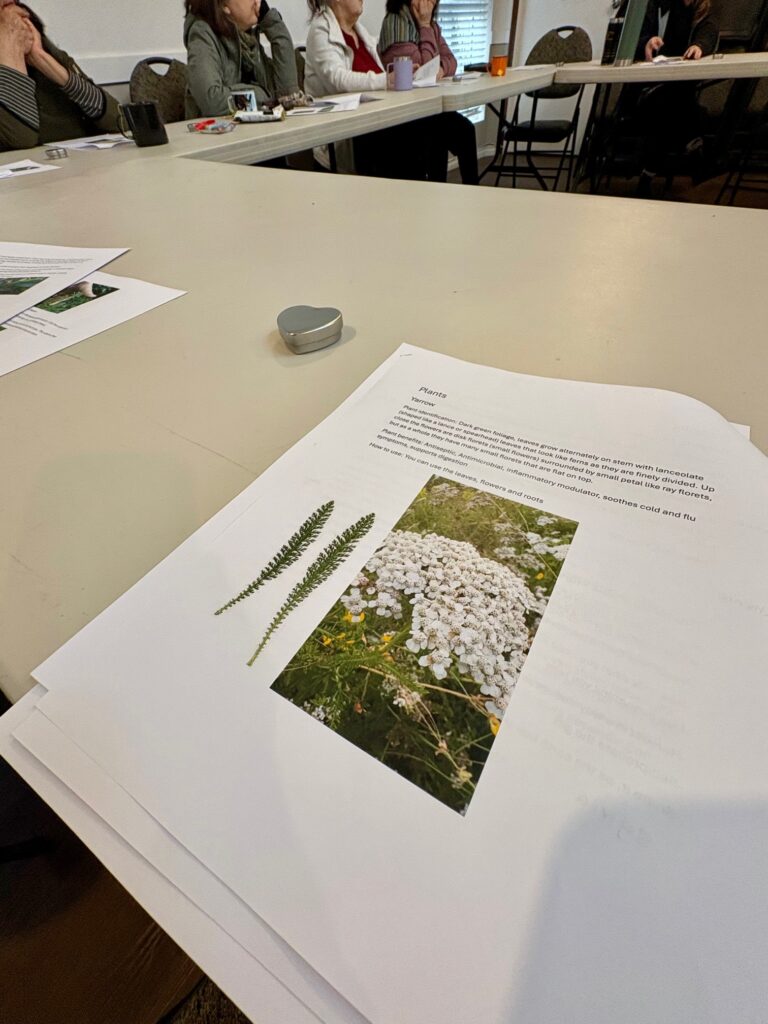
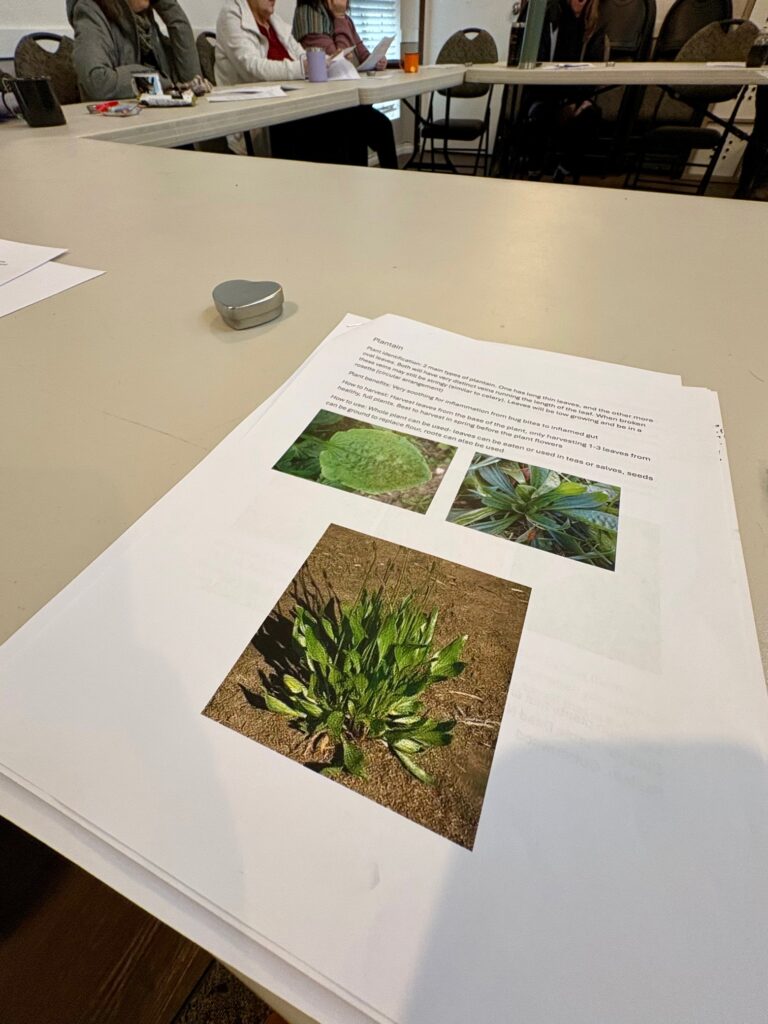
Kristen then shared with us the steps of creating a medicinal salve:
- Completely dry the herbs using the sun, a dehydrator, or an oven (the plants should crumble when crushed)
- Infuse in oils (see oil options below) by placing in a jar in the dark for 6 weeks, using a double boiler, sun infusion, or water batrh in a crockpot
- Pour 1 cup of infused oil through a cheesecloth into a pot and discard the plant material and the cheesecloth.
- Add 1/4 cup of beeswax
- Optional: add 15-30 drops of essential oil (such a lavendar)
- On very low heat melt all ingredients, mixing frequently
- Pour liquid into metal salve containers
- Allow plenty of time to cool
- Enjoy your salve!
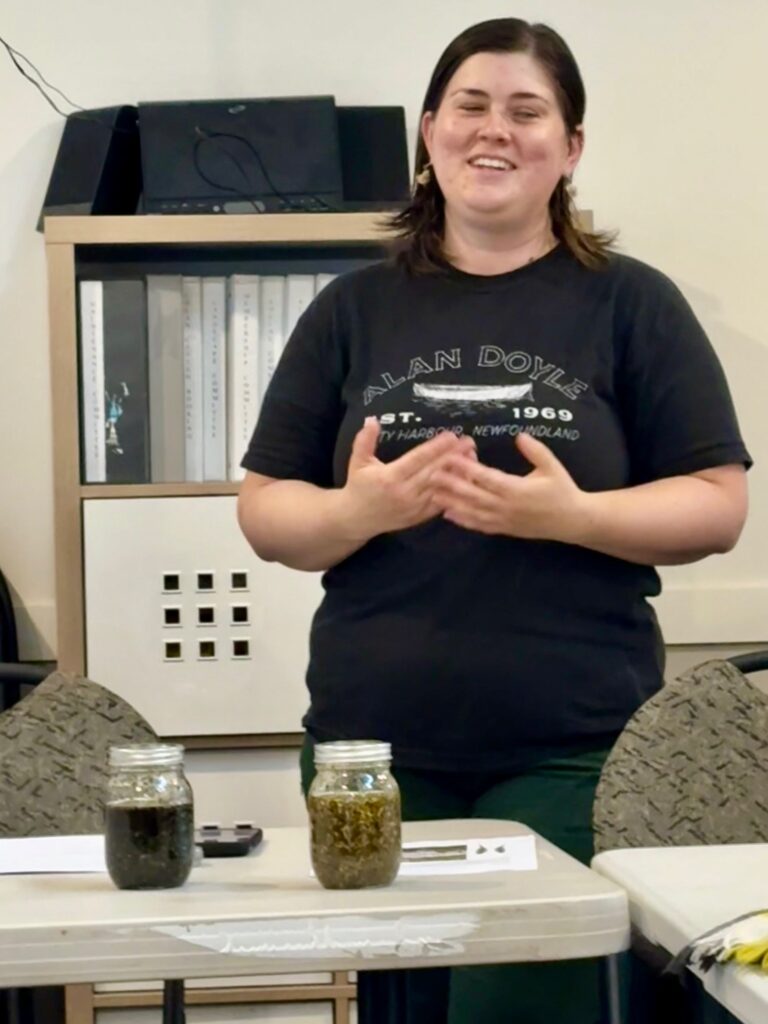
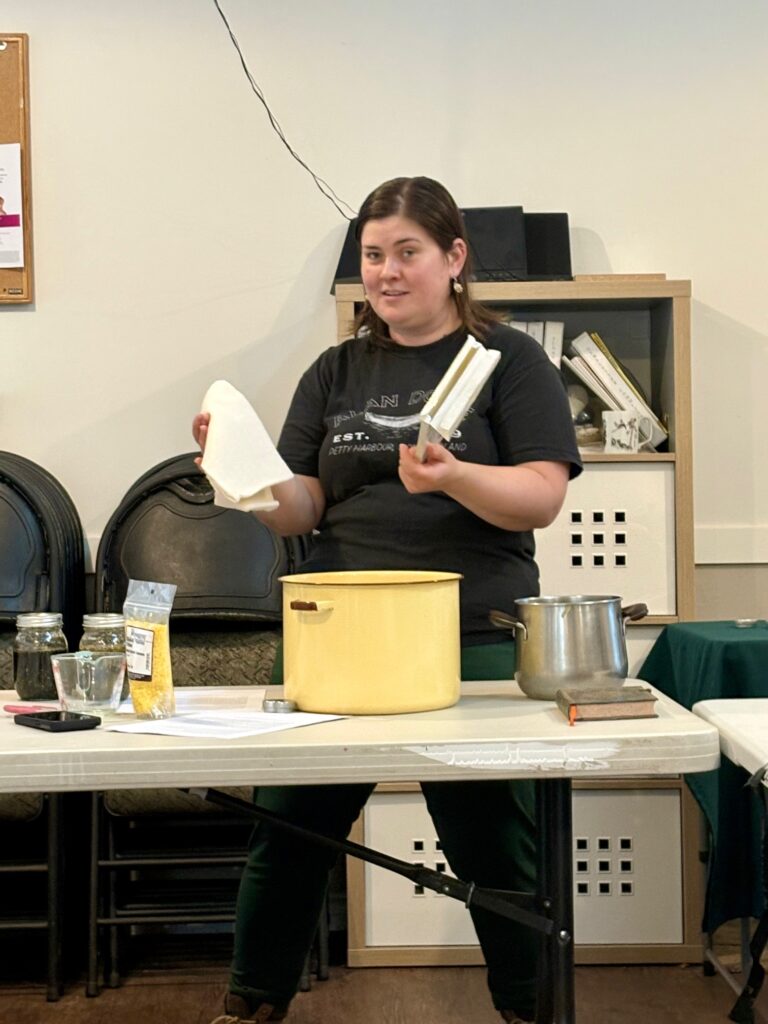

Oil Options
A variety of carrier oils can be used to create salve, including:
- Sunflower oil: great for skin, but very sensitive to light and heat
- Jojoba oil: called an oil, but it is really a wax and can clog skin
- Olive oil: affordable and accessible, but can also clog pores
- Sweet almond: quickly absorbed on the skin and very light
We then went for a walk through the Kinross Creek Co-op and into the Douglas Fir Teaching Garden, along the Red Alder Trail. Kristen pointed out the introduced plants in the area, including plantain and purple dead nettle. Free the Fern Executive Director, Grace Nombrado, also shared some edible native edible in the teaching garden, including: woodland strawberry, redwood sorrel (tastes like lemon!), tall and low Oregon grape, and sword fern (whose roots can be boiled like a potato).
Thank you, Kristen, for sharing your knowledge and salve with us! We look forward to having you back in May for a bee workshop (event will be posted soon on our event page).
Funding for this workshop was provided by Park People.